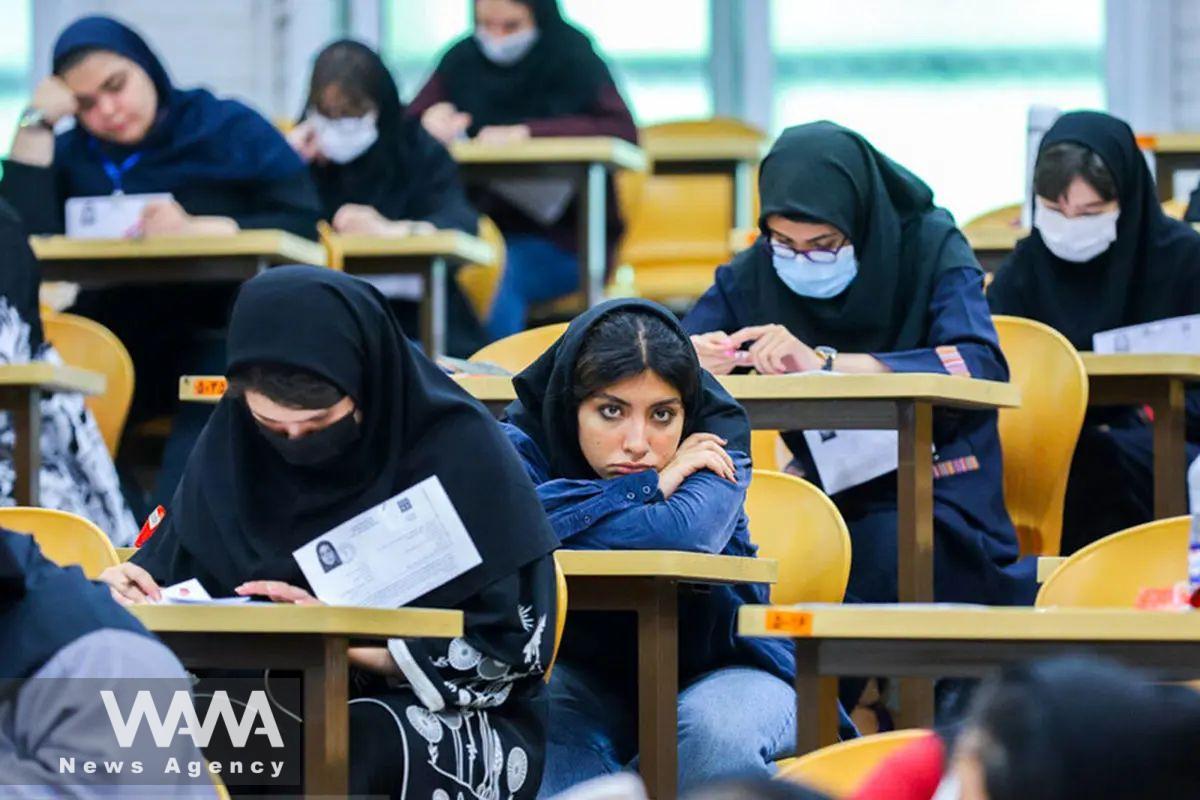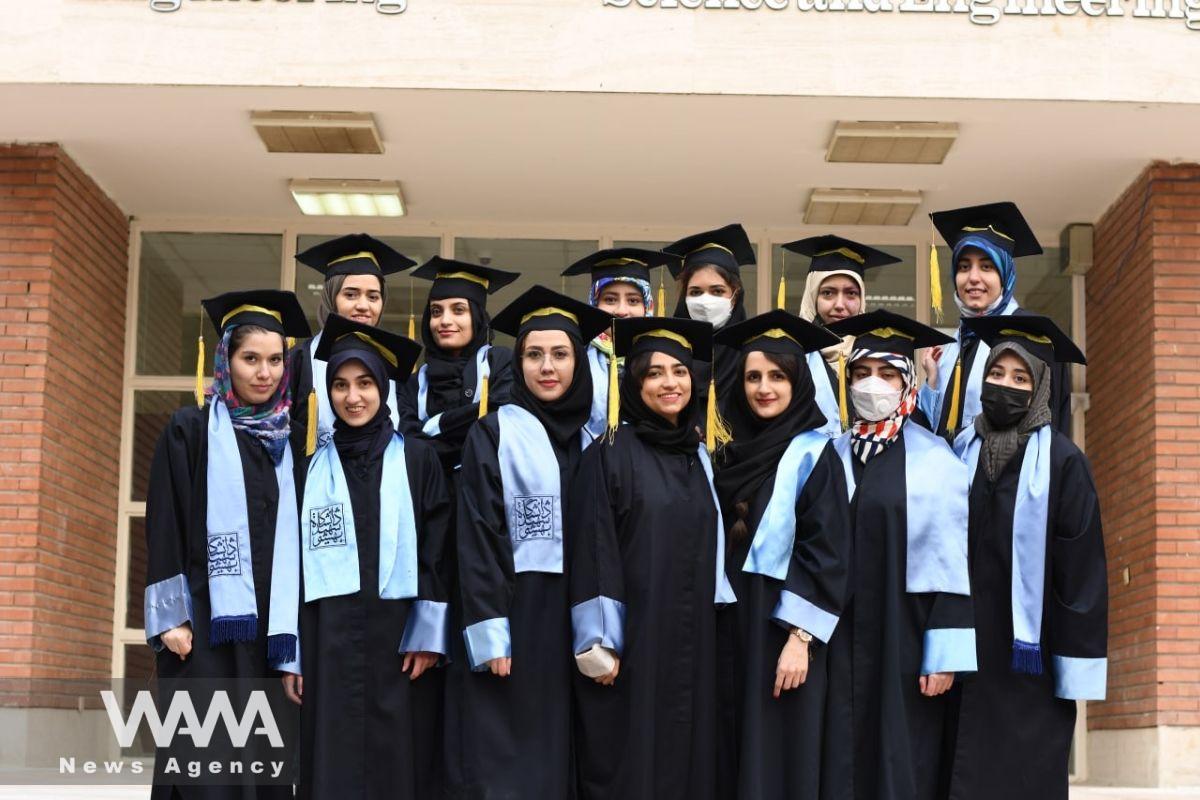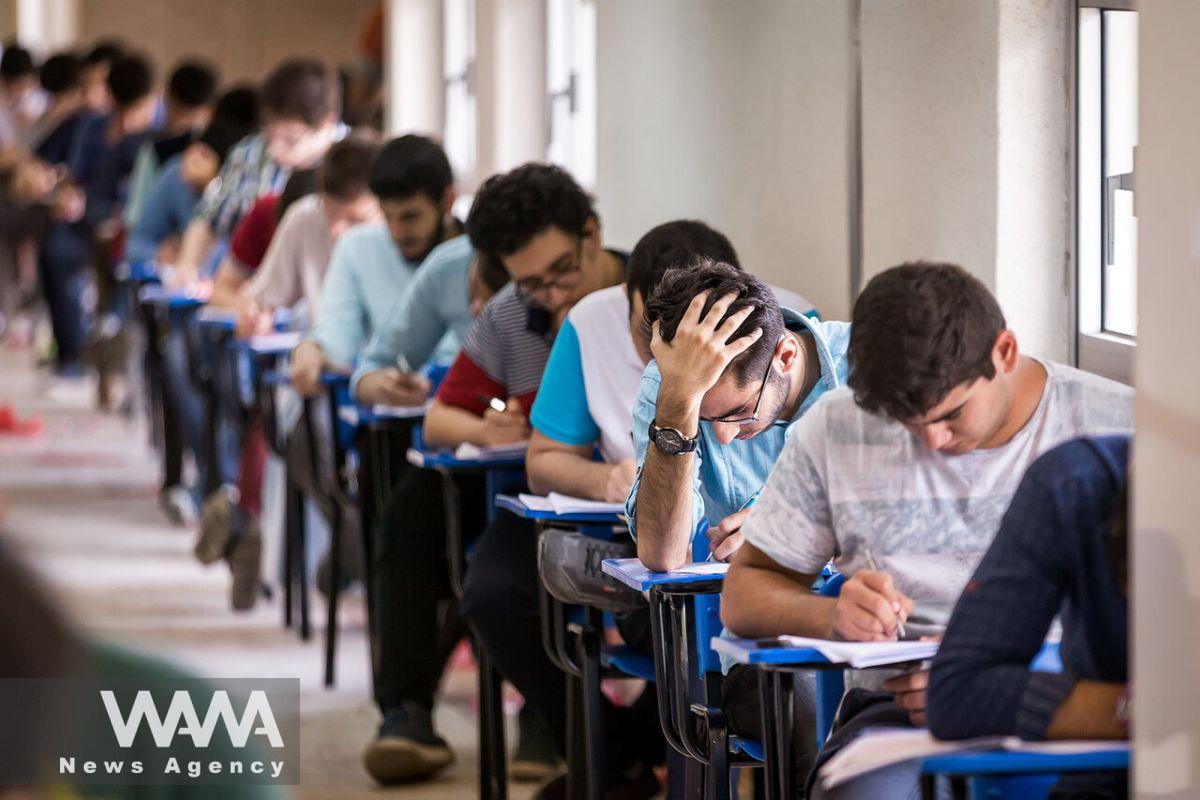Iran’s Education: Constructive or Destructive?
WANA (Sep 14) – According to the latest statistics for 2024, Iran’s population is estimated to be around 89 million people. A significant portion of this population is affected by the country’s educational system, with not only students and pupils but also their families involved in their children’s education.
Throughout the academic years, families face numerous challenges within the educational system, including financial, psychological, and educational issues.
Despite nurturing elite talents and outstanding individuals, Iran’s educational system has always faced serious criticism.
This education system, based on the French model, operates on a 6-3-3 structure, meaning that students spend six years in elementary school, three years in the first stage of secondary education, and another three years in the second stage of secondary education.
In the second stage of secondary education, students choose their field of study and, after three years, prepare to take the national university entrance exam, known as the “Konkur.”
Although Iran’s Educational Testing Organization claims that textbooks are the main sources for the Konkur exam, the level of the questions is much more complex than the material taught. More specifically, students encounter simpler problems in class, while the Konkur exam features more advanced questions.
This gap forces students to attend private classes and use supplementary resources. Those who cannot afford these resources often fall behind in the competitive exam process.
Students preparing for the Konkur exam grapple with psychological pressure due to the extensive study material and the stress of selecting appropriate study resources.
Additionally, some educational institutions, instead of focusing on the quality of education, exploit the current situation as an opportunity to generate revenue, charging substantial fees without considering the actual needs of the students.
These challenges demand significant time and costs and create additional problems for families that, due to financial or geographic limitations, lack access to high-quality educational resources. This situation directly impacts the morale of both students and their families.

Female students taking the university entrance exam (Konkur), Social media/ WANA News Agency
By the end of 2023, the student population in Iran from first to twelfth grade was approximately 16 million, accounting for nearly 19% of the total population. Among these students, those completing their final year of school would take the Konkur exam to pursue higher education.
In 2023, the number of university students in Iran reached 3,249,601, marking a 2.7% decrease compared to previous years. Of this number, 50.2% are women and 49.8% are men.
The decrease in the number of applicants can be attributed to various factors, including the ineffectiveness of educational content and degrees in securing jobs, the lack of suitable platforms for the growth of graduates, and economic challenges.
Iran’s President, Masoud Pezeshkian, has critically examined the state of the country’s education and higher education systems, addressing fundamental issues in these areas. He believes that despite significant expenditures on developing universities, many of these institutions have failed to deliver the expected quality.
These universities have not only failed to meet societal needs but have also produced a large number of unemployed graduates.
Pezeshkian also points out the comparative status of Iranian universities against global standards, noting that while international universities have advanced to the fourth and fifth generations of education, Iranian universities remain at the second-generation level. In his view, these universities focus more on generating revenue than solving societal issues.
Another fundamental problem Pezeshkian highlights is the lack of salary differentiation between creative and skilled individuals and ordinary people. He believes that ignoring competencies and skills reduces motivation among elites and ultimately emits top talents to other countries.
To prevent this migration, he suggests that differences be introduced in payment and evaluation mechanisms to retain top talents and prevent universities from depleting skilled individuals.
Despite these problems, a fundamental question remains: why do the current structures in education and higher education continue to be maintained? The Konkur, as one of the key issues in this system, has always been challenging.
In recent years, the Organization for Educational Testing has attempted to alleviate students’ psychological pressure by implementing changes such as removing general subjects from the exam and reducing the exam duration to three hours.
Additionally, a portion of the final Konkur result has been allocated to academic records to reduce reliance on a four-hour exam.
However, another issue has emerged involving the leakage or sale of exam questions by profiteers.
Students have expressed dissatisfaction with this unfairness in the grading process. Moreover, reports from student surveys indicate that the level of questions in these exams is still high compared to the content taught in textbooks.

Shahid Beheshti University students graduating ceremony, Social media/ WANA News Agency
According to Masoud Pezeshkian, there are two fundamental problems in the Iranian education system: first, the lack of training in essential skills such as teamwork, problem-solving, and management, and second, the inequity in the educational system, which leads to disparities in access to academic resources.
He notes that in some specialized schools, the level of education is higher than that of universities, while in other schools, there is even a shortage of teachers. This inequity creates a gap between generations and a lack of mutual understanding.
He also emphasizes the need to create a fair and equitable educational environment for all children. This discrimination leads to the emigration of talented individuals and a loss of patriotism among the younger generation, indicating that solutions need to be found for this problem.
The Supreme Leader has also issued serious criticisms of the country’s educational system and has called on officials to address these issues. One important point he raised is the instability in the management of the Ministry of Education.
The Supreme Leader emphasized that the constant changing of ministers and managers in this large and complex organization is detrimental. Each change in the minister not only leads to changes in deputy and middle management positions but sometimes even affects school principals.
According to the Supreme Leader, this managerial instability is one of the main factors contributing to the current disorder in the educational system.
Ayatollah Khamenei also stressed the need for engaging, up-to-date, and creative textbooks and called for a review of educational content.
He believes textbooks should be designed to ignite interest and enthusiasm for learning in the younger generation and encourage them to pursue education passionately.
However, various factors, including the lack of appropriate resources and economic difficulties, have led many young Iranians to believe that higher education may not significantly benefit their future.
They feel that the country’s universities merely waste their precious time by not providing practical, skill-based knowledge that aids personal and professional development.
This has led students to seek practical skills outside the university environment after finishing school or look for jobs to improve their economic conditions. Additionally, many students are considering studying abroad due to this situation.
When considering the opinions of students, university students, and their families regarding the prevailing educational system, aside from the Konkur, similar points are raised: First, educational classes, whether in universities or schools, are conducted in a dry and uninspired manner that neither stimulates interest in learning nor prevents discouragement and lack of enthusiasm among students.
Many students believe that despite the extensive academic material, the Iranian educational system does not emphasize practical activities enough.
They often find themselves only sitting in class and memorizing content. This situation limits the development of other skills and confines learning to theoretical subjects.

Male students taking the university entrance exam (Konkur), Social media/ WANA News Agency
Reyhaneh Afshar, a recently graduated high school student who had the Konkur exam in the experimental sciences track this year, expressed her views on the educational system, highlighting its strengths and weaknesses.
She noted that one of the system’s most significant positive aspects is the diversity of subjects offered, which, despite its intensity, provides a relative understanding of various fields and awakens latent interests and talents, helping to recognize them. She also considered the framework for school dress codes to be positive.
Reyhaneh Afshar also had criticisms: She felt there was a significant lack of psychological and communication training, such as anger management, emotional expression, and crisis management, in schools.
Additionally, she noted that some subjects need updating, revision, or even adding new topics, and she hopes these issues will be addressed.
She also criticized the Konkur system and the frequent and changing directives from the Ministry of Education and the Organization for Educational Testing, which confused students.
Afshar believes that making some subjects optional and adding artistic and practical courses could increase students’ interest in the educational environment. She also suggested employing teachers who are both ethically and academically qualified.
The Iranian educational system faces numerous challenges that require fundamental reforms in structure, content, and teaching methods.
While positive steps such as increasing the impact of academic records are being implemented, issues like inequity in access to quality education, psychological pressure from the Konkur, and disparities in teacher and elite compensation remain.
Improving this situation requires special attention from officials to create educational equity, enhance teaching quality, and implement managerial reforms at various levels of the educational system.












